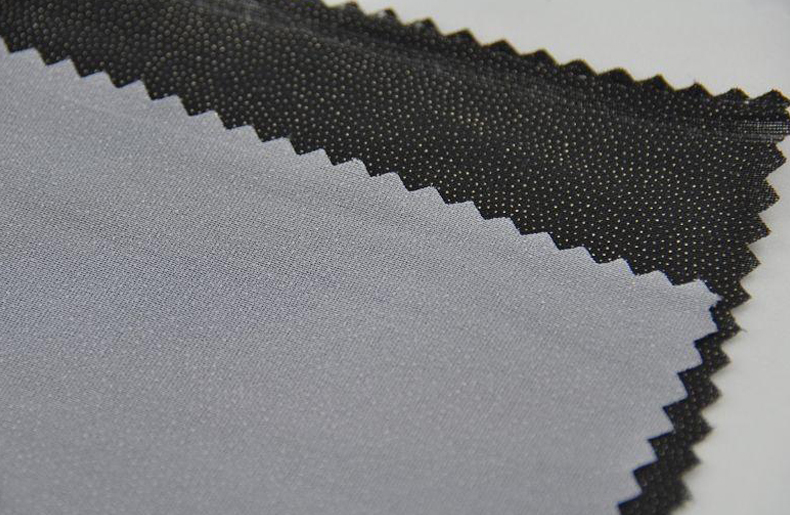Bonding conditions are not suitable, such as Woven Interlining bonding temperature is too high, too low, low pressure, short time and other reasons. Less adhesive or quality problem of fusible interfacing.Properly adjust the bonding conditions temperature, time, pressure or change other fusible interlining.Because there is shrinkage difference when the fabric and interlining thermal bonded. If the adhesive is not solidified, the size difference caused by thermal shrinkage and lead to bubble. If the thermal shrinkage of fabric is larger than that of lining cloth, the lining cloth bulges, and vice versa.Choose the interlining cloth with the thermal shrinkage matching the fabric.

If the fabric shrinks too much, you can use the same bonding conditions in the fusing machine. Heat shrinks the fabric firstly, adjust the bonding temperature and time properly, so that the thermal shrinkage of the fabric is kept to the smallest extent possible.The particle size of hot melt adhesive powder of the lining cloth is not consistent with the processing technology during the coating process and causes the glue penetration.Choose suitable interlining according to the thickness of fabric. General fabrics from thick to thin, selected mesh number from thin to dense interlining cloth.Weaving is the main way of fabric formation. The woven Fusible Lining is formed by braiding on each other and below. There are many natural and man-made woven fabrics, including denim, wide cloth, silk, satin, flannel and twill.
The fabric line can be made of cotton, linen, bamboo, polyester or even rayon.As with any industry, time and labor are reflected in the cost of goods. The braid is formed on the loom and made of sturdy. The fabric can not be stretched without shrinkage. Although this does produce a higher quality of clothing, it increases the cost of production. Other fabrics such as knitted fabrics are made from machines and can be stretched using steam engines. This makes the fabric cheaper, but not so strong. That's why a pair of jeans is easy to overtake a T-shirt.Woven interlining are rigid and make them ideal for older workwear, such as jeans and overalls. This also makes the fabric feel softer than the knit fabric.
Knitted fabric soft, with the body movement, if necessary, stretching and stretching. The only drawback of woven fabrics in comfort is that they may be holding the wrong place.Most cotton fabrics, such as denim, are easy to wash and usually do not shrink or wrinkle. Other textile fabrics such as linen and silk fabrics may be laborious when washed, especially if the fabric needs dry cleaning or pressing.Weaving is far more than most other fabrics, such as knitting, which is why so many heavy fabrics are woven. Examples of woven fabrics include denim, linen, corduroy and tweed. Knitted fabrics are comfortable, but due to the overall stretchability, not suitable for heavy use. Examples of knitted fabrics include Tshirt fabrics, sweaters, sweaters and terry cloths.

 English
English Español
Español Türk
Türk 简体中文
简体中文









